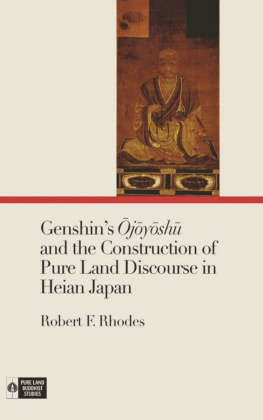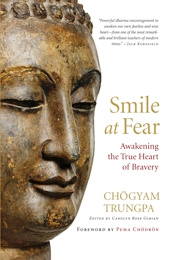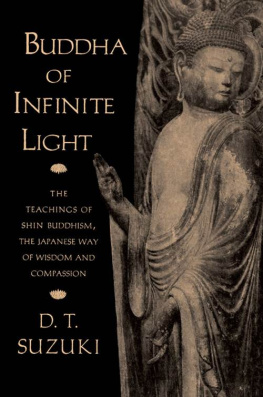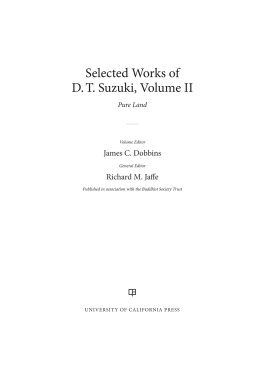World Wisdom The Library of Perennial Philosophy
The Library of Perennial Philosophy is dedicated to the exposition of the timeless Truth underlying the diverse religions. This Truth, often referred to as the Sophia Perennisor Perennial Wisdomfinds its expression in the revealed Scriptures as well as the writings of the great sages and the artistic creations of the traditional worlds.
The Shin Buddhist Classical Tradition: A Reader in Pure Land Teaching, Vol. 2 appears as one of our selections in the Treasures of the Worlds Religions series.
The Treasures of the Worlds Religions Series
This series of anthologies presents scriptures and the writings of the great spiritual authorities of the past on fundamental themes. Some titles are devoted to a single spiritual tradition, while others have a unifying topic that touches upon traditions from both the East and the West, such as prayer and virtue. Some titles have a companion volume within the Perennial Philosophy series.
Cover:
Amida Buddha, flanked by the Bodhisattvas Kannon and Daiseishi.
Painting by Catherine Schuon, 1955,
based on a medieval Japanese scroll of the Muromachi period, 15th century.
The Shin Buddhist Classical Tradition
A Reader in Pure Land Teaching
VOLUME 2
Edited by
Alfred Bloom
Foreword by
Kenneth K. Tanaka
The Shin Buddhist Classical Tradition:
A Reader in Pure Land Teaching, Vol. 2
2014 World Wisdom, Inc.
All rights reserved.
No part of this book may be used or reproduced in any manner without written permission, except in critical articles and reviews.
Library of Congress Cataloging-in-Publication Data
The Shin Buddhist classical tradition : a reader in Pure Land teaching / Edited by Alfred Bloom ; Foreword by Kenneth K. Tanaka.
pages cm. -- (The treasures of the worlds religions series)
Includes bibliographical references and index.
ISBN 978-1-936597-27-7 (pbk. : alk. paper) 1. Shin (Sect)--Doctrines. I. Bloom, Alfred.
BQ8718.3.S46 2013
294.342046--dc23
2013026871
Printed on acid-free paper in the United States of America.
For information address World Wisdom, Inc.
P.O. Box 2682, Bloomington, Indiana 47402-2682
www.worldwisdom.com
CONTENTS
VOLUME 2
by Kenneth K. Tanaka
by Alfred Bloom
Acknowledgements
I am very grateful to Professor Hisao Inagaki, Dr. Joji Atone, and Mr. Wayne S. Yokoyama for personally permitting the use of their translations, as well as all the publisher permissions to reprint passages from the following scholars translations which have contributed to this text, as follows:
Joji Atone and Yoko Hayashi, trans. The Promise of Amida Buddha: Honens Path to Bliss. Boston: Wisdom Publications, 2011.
Yoshito Hakeda, trans. The Awakening of Faith. New York: Columbia University Press, 1967.
Dennis Hirota, trans. No Abode: The Record of Ippen. Honolulu: The University of Hawaii Press, 1997.
Julian F. Pas. Visions of Sukhavati: Shan-taos Commentary on the Kuan-wu-liang-shou-Fo Ching. Albany: State University of New York Press, 1995.
Kenneth K. Tanaka. The Dawn of Chinese Pure Land Doctrine: Ching-ying Hui-yuans Commentary on the Visualization Sutra. Albany: State University of New York Press, 1990.
I want to thank Dr. Kenneth K. Tanaka for graciously writing the two Forewords for both volumes of The Shin Buddhist Classical Tradition: A Reader in Pure Land Teaching. I am also grateful to Ms. Kenya Lee Province for her editorial help, and Mr. Esho Shimazu and Dr. Tsuneichi Takeshita for their assistance.
Finally, I must express my deep appreciation to Ms. Mary-Kathryne Steele and her staff at World Wisdom for their limitless patience as I dealt with various health issues in the course of producing this book. Also I am thankful for my family, who supported my effort to complete the work. The author takes responsibility for any errors, omissions, or misunderstandings.
Foreword
In Volume Two, Dr. Bloom focuses on practice in the Pure Land tradition by placing Pure Land practices in the context of general Buddhism from its very beginnings. Pure Land practices emerged within the early development of Mahayana Buddhism and included rigorous meditative disciplines. These meditative disciplines were designed to attain visualization of the Buddhas, the bodhisattvas, and the features of the Pure Land. And when these meditative disciplines were fully realized, they served as confirmation of the practitioners birth in the Pure Land at the end of their lives and the eventual realization of Buddhahood in the Pure Land.
Dr. Bloom highlights the fact that in the course of this history, particularly starting in China, the Amida-centered Pure Land teaching raised the hope for birth in that Land for the masses by interpreting the central practice of the eighteenth Vow of Amida as the recitation of the Buddhas Name, rather than as the more difficult visualization practices alluded to above. While it has sometimes been noted that doctrine and belief are not central issues of Buddhism, as they are in Western religions, the popular development of Pure Land teaching included belief in the efficacy of the recitation of the Name of Amida (nembutsu) along with the belief in a realistic Pure Land, which was portrayed with detailed descriptions in the sutras. The popularity of Pure Land teaching and practice were also encouraged by the belief in the decline of Buddhism in the theory of the last age in the demise of the Dharma (mappo). In the last age, as an alternative to the difficult monastic disciplines, the nembutsu was easily available for all people, regardless of their spiritual abilities. Consequently, Pure Land Buddhist practices came to be incorporated by many Buddhist traditions in East Asia, for not only the lay followers but even for the monks and nuns.
As Dr. Bloom points out, there were two significant features in the further development of Pure Land Buddhism when transmitted to Japan. The one was Honens establishment, in 1175, of Pure Land Buddhism as an independent sect based strictly on Pure Land sutras and treatises. The other development was seen in Honens disciple Shinrans reinterpretation of Pure Land Buddhism. Shinran placed much greater emphasis on entrusting to Amidas vow, endowed by the Buddha, and transformed the meaning of the recitation of his Name from an efficacious act to gain birth and Buddhahood to that of an expression of gratitude for the endowed vow of Amida.
Honen declared the universal applicability of the exclusive practice of nembutsu. In the last age of the Dharma only the nembutsu could save monk and layperson alike. In following his teachers lead, Shinran stressed that all people are assured of birth in the Pure Land through entrusting to Amidas vow and not by self-striving practice. In so doing, he focused particularly on the inner dimension and experience of trust in the vow to a greater degree than his teacher. Given this focus on the inner spiritual dimension, in more recent times, Shinrans interpretation has raised the question of just what constitutes practice in Jodo Shinshu Buddhism. This concern has become especially acute within the Western context, where practice-centered traditions, particularly meditation, mingle and compete as the authentic form of Buddhism.
Next page








